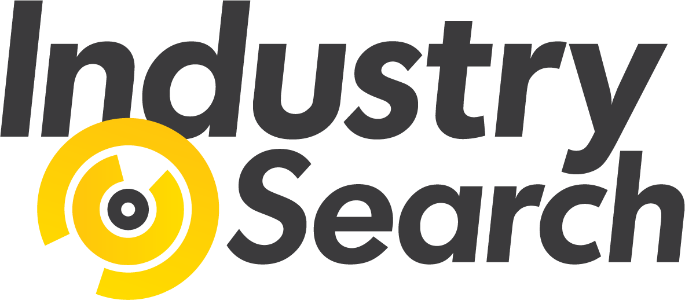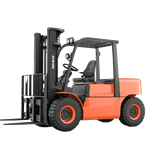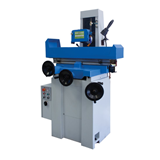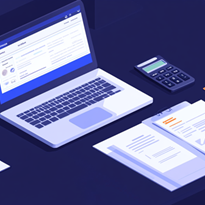Need to finance a used forklift in Australia? This guide covers chattel mortgages, leasing, instant asset write-offs, and how brokers can help you secure the right deal for your business.
Key takeaways
- Used forklift prices in Australia range from $10,000 to $45,000 depending on brand, capacity, hours, and condition.
- Finance approval typically requires a 10–20% deposit and at least 6 to 12 months of ABN trading history.
- Top loan options include chattel mortgages (you own the asset upfront) and equipment leases (greater flexibility and tax benefits).
- Used forklift finance rates in 2025 generally range between 7.95% and 12.99%, depending on credit profile and asset age.
- Repayments can start from around $210 per week for a $25,000 used forklift over five years.
- Pre-approval helps buyers negotiate better, avoid delays, and understand what’s realistically affordable.
- Brokers play a crucial role in helping buyers access tailored loan options, reduce risk, and increase approval odds.
- Watch out for risks such as balloon payments, unverified maintenance histories, or non-compliant units.
- New businesses can still get finance, with some lenders supporting applicants who have just 6 months of trading history.
Introduction: Why financing a used forklift makes business sense
Whether you’re expanding your warehouse operations or replacing an older machine, buying a used forklift is often the most cost-effective path forward for many Australian businesses. But financing used equipment comes with its own set of rules, options, and traps. That’s especially true with forklifts, which are classified as high-risk by some lenders due to safety and compliance regulations.
Getting finance right for a used forklift can make the difference between boosting your cash flow—or dealing with years of overpayment or operational delays. This guide walks you through everything you need to know about securing the right finance for a used forklift in Australia, including typical price ranges, finance products, broker advice, approval requirements, and frequently asked questions.
What does a used forklift cost in Australia?
Used forklift prices vary widely based on the type of forklift, its brand, and condition. On the lower end, you can pick up a small electric walkie stacker for around $10,000. A late-model 2.5-tonne counterbalance LPG forklift from a known brand like Toyota or Crown will usually sit between $15,000 and $25,000. Heavy-duty diesel units with larger lifting capacities can reach $40,000 or more, especially if well-maintained and recently serviced.
Age and operating hours are the two biggest factors affecting price. Generally, units with fewer than 5,000 hours and regular servicing fetch higher prices. Add-ons like side shift, fork positioners, or rotators can also affect the cost.
Want a deeper breakdown of real-world used forklift prices in Australia? Read our full pricing guide here: How Much Do Used Forklifts Cost? Full Price Breakdown
Understanding your forklift finance options
There are three main finance options available to Australian businesses when purchasing used forklifts. Choosing the right one depends on your cash flow, tax structure, and long-term equipment strategy.
Chattel mortgage
A chattel mortgage is one of the most common finance products for equipment like forklifts. In this structure, the forklift is owned by the business from day one, and the lender takes a mortgage over the asset until the loan is repaid.
Best suited for: Businesses wanting immediate ownership and the ability to claim tax deductions on depreciation and interest.
Key features:
- Fixed monthly repayments
- Option for balloon payments at the end to reduce monthly costs
- GST on the asset can be claimed upfront on the next BAS
Equipment lease
An equipment lease allows a business to rent the forklift for an agreed period, usually with the option to buy at the end of the lease term.
Best suited for: Businesses wanting lower upfront costs, flexibility, or those who prefer not to hold the asset on their balance sheet.
Key features:
- Monthly lease payments are usually fully tax deductible
- The lender retains ownership until the lease ends
- End-of-term options can include purchasing, upgrading, or returning the forklift
Operating lease or rental
Some businesses prefer a short-term rental or operating lease where the forklift is returned at the end of the agreement with no option to purchase.
Best suited for: Short-term projects, seasonal use, or businesses trialling a forklift before long-term commitment.
Key features:
- No ownership
- Fully off-balance-sheet
- Maintenance is often included, but at a higher overall cost
Finance scenarios: What repayments might look like
To give you a realistic idea of what to expect, here are three typical used forklift finance scenarios and their repayments.
Scenario one: $15,000 used electric walkie stacker
- Loan type: Chattel mortgage
- Term: 3 years
- Deposit: 10%
- Interest rate: 9.49%
- Weekly repayment: Approximately $105
Scenario two: $25,000 mid-sized LPG forklift
- Loan type: Chattel mortgage or lease
- Term: 4 years
- Deposit: 20%
- Interest rate: 8.75%
- Weekly repayment: Approximately $128
Scenario three: $40,000 heavy-duty Diesel forklifts
- Loan type: Chattel mortgage or equipment lease
- Term: 5 years
- Deposit: 20%
- Interest rate: 8.25%
- Weekly repayment: Approximately $156
These are guide figures only. Final repayments will depend on your credit profile, trading history, deposit size, and equipment condition. Rates and terms are based on lender data from RateCity (July 2025) and aggregated broker information.
What lenders look for when financing used forklifts
Used forklifts are considered slightly higher risk by many lenders due to safety, compliance, and potential maintenance costs. That means getting approved can take more paperwork and preparation than financing a new forklift.
Here’s what finance companies assess:
Trading history
Most lenders want at least 12 months of ABN trading, but some will consider applicants with only 6 months of operation, particularly if revenue is strong and stable.
Financial documentation
Depending on the loan size and your business age, you’ll be asked to provide either:
- Profit and loss statements
- Last two Business Activity Statements (BAS)
- 3 to 6 months of bank statements
These help demonstrate your capacity to repay the loan.
Credit history
Clean credit reports improve your chances of approval and better rates. If you have a blemished credit record, near-prime lenders may still approve your loan, but at higher interest rates and possibly with a larger deposit.
Equipment details
You’ll need a formal invoice or quote showing:
- Make, model, and year
- Recorded engine hours
- Full service history
- Condition report
- Compliance information (including forklift certification if applicable)
Why using a finance broker can make a major difference
While it's possible to go directly to a lender, engaging a finance broker—especially one with experience in used equipment—can streamline the process and improve your outcome.
Benefits of using a broker:
- Access to multiple lenders, including those who specialise in used forklifts
- Better chance of approval due to tailored application packaging
- Ability to structure residual payments to manage cash flow
- Clear explanation of tax and accounting implications for different loan types
- Help with pre-approval so you can negotiate confidently with sellers
A broker will also help avoid common pitfalls, such as agreeing to loans with hidden fees, unclear balloon structures, or insurance add-ons that drive up the total cost unnecessarily.
Pitfalls to avoid when financing used equipment
Financing used forklifts can come with traps. These are the main risks to watch out for:
- Balloon payments that are not properly explained in your agreement
- Lenders who quote a very low weekly repayment without showing the total cost of finance
- Forklifts without proper compliance plates or service records—these can’t be legally operated in many work environments
- Early repayment penalties that restrict flexibility
- Overpriced dealer insurance or warranty add-ons bundled into finance
Always review the loan agreement in full and ask for a breakdown of total repayments over the life of the loan—including fees, GST treatment, and any residual payments.
Documents you’ll need to apply
To keep the process smooth, prepare the following before applying:
- Driver’s licence (or business owner ID)
- ABN registration certificate
- Forklift quote or invoice
- Recent bank statements (3 to 6 months)
- Business financials or BAS (if available)
- Any proof of business income (e.g. contracts, job bookings)
For private sales, some lenders will also require an independent valuation or condition report.
Tax benefits and instant asset write-off for used forklifts
Financing a used forklift isn’t just a way to preserve cash flow—it can also unlock valuable tax advantages for Australian businesses. The structure you choose (such as a chattel mortgage or lease) will affect how and when you can claim deductions, so it's worth understanding how this works under current Australian Taxation Office (ATO) rules.
Instant asset write-off: Are used forklifts eligible?
Yes. Under the ATO’s temporary full expensing provisions (active until 30 June 2025), eligible businesses can immediately deduct the full cost of a used forklift in the year it is first used or installed for business purposes—provided the asset meets certain eligibility criteria.
To qualify:
- The forklift must be used or installed by 30 June 2025
- Your business must have a turnover under $5 billion
- The forklift must be used primarily for business purposes
- It can be new or second-hand
This means if you finance a $25,000 used forklift and install it this financial year, you could deduct the full cost on your 2024–25 tax return—reducing taxable income and improving year-end cash flow.
For detailed eligibility, visit the ATO’s asset deductions guide.
Chattel mortgages: GST and depreciation benefits
Chattel mortgages are popular with forklift buyers because they offer both ownership and flexibility at tax time. If you’re registered for GST:
- You can claim the GST on the forklift purchase upfront in your next Business Activity Statement (BAS), even though you're financing it.
- You can depreciate the forklift as a business asset over its useful life (or fully expense it if eligible under temporary rules).
- Interest payments on the loan are also tax-deductible.
This structure is ideal for businesses that want long-term ownership and upfront tax benefits.
Equipment leases: Ongoing deductions with flexibility
If you choose an equipment lease instead of a chattel mortgage, the asset remains owned by the lender during the lease term. However, this structure can offer consistent tax advantages:
- Monthly lease payments are typically 100% tax-deductible
- No upfront GST on the full forklift value (only on lease payments)
- You can often structure end-of-lease buyouts if you want to eventually own the asset
This makes leasing appealing for businesses that want to manage cash flow more tightly, particularly those who prefer not to carry depreciating assets on their books.
Frequently asked questions
Can I finance a used forklift if my business is new?
Yes. Some lenders accept businesses with as little as 6 months of trading history, especially if the borrower has strong revenue or prior industry experience. Expect to pay a slightly higher interest rate and potentially provide a higher deposit.
Is private sale forklift finance available?
Yes, but it’s more limited than dealer finance. Some lenders support private sales if the equipment has a compliance plate, recent service history, and the sale is properly documented.
Do I need a deposit?
In many cases, yes—particularly for used equipment. A deposit of 10–20% can improve your chances of approval and unlock better rates. Zero deposit finance is sometimes available for strong credit applicants or low-risk industries.
Can I lease used equipment?
Yes. Many leasing companies now offer leases on second-hand forklifts, provided they are under 10 years old and in good working condition. End-of-lease purchase options are usually available.
What happens at the end of a lease?
Depending on the lease terms, you may have the option to buy the forklift, upgrade to a newer model, or return it. Make sure to clarify the residual amount upfront.
Final thoughts
Financing a used forklift can be a strategic way to grow your business without tying up working capital. Whether you're buying a single unit or expanding your fleet, the key is to match your finance structure to your cash flow and long-term equipment needs.
By preparing the right documents, choosing the right finance type, and working with a knowledgeable broker, you’ll increase your chances of securing a competitive deal. And by staying alert to the common pitfalls in used equipment finance, you’ll be positioned to make a smarter, safer purchase.









-160x160-state_article-rel-cat.png)









